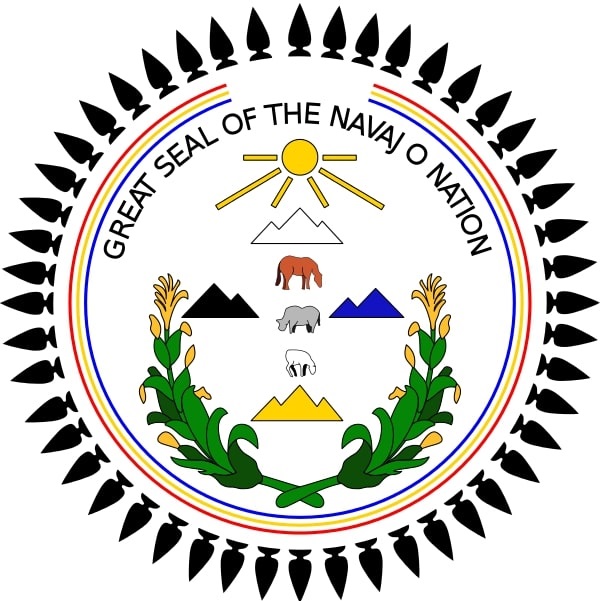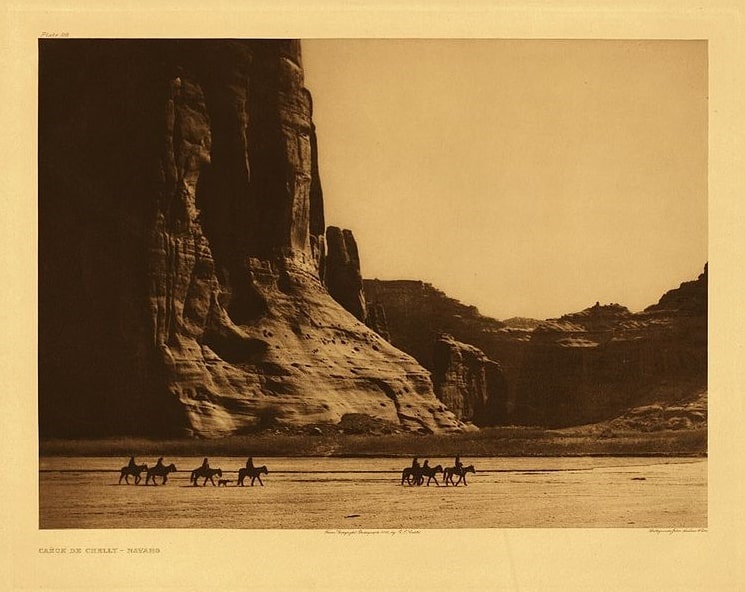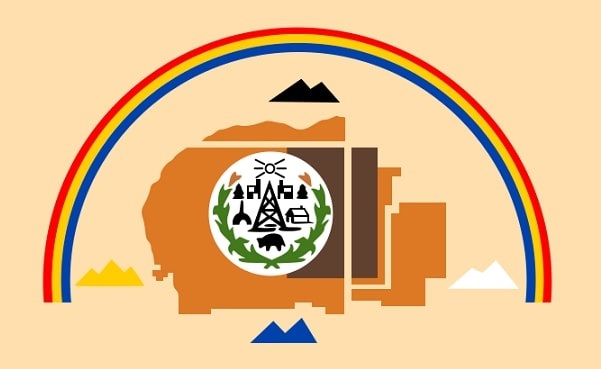Discover the complex history of Native American reservations in the U.S., and the stories of strength, determination, and cultural preservation they hold. Genealogy researchers and those interested in family history can gain insight into their ancestors by learning how Native American reservations have changed over time.
Knowing the history of Native American reservations will help us understand the challenges facing their people and why preserving their cultural identity and traditions is so important. We’ll highlight which state has the most Native Americans and where the largest Native American reservation is located. We’ll also explore different resources for people searching for their family history, including genealogy records and historical archives.

Where Is the Largest Native American Reservation Located?
Navajo Nation
The largest Native American reservation in the United States is the Navajo Nation Reservation. With a land area more than 27,000 square miles, this sprawling reservation is located in the southwestern U.S. and covers parts of Arizona, New Mexico, and Utah.
Population
The Navajo Nation Reservation is home to over 300,000 people. Only the Cherokee have more tribal members. The Navajo call themselves “Diné,” meaning “The People.” Their language is similar to those spoken in northern regions like Canada and Alaska, suggesting that this is where they originated.
The Navajo were traditionally nomadic people, moving to find food and resources. The Navajo had a reputation for being exceptionally clever and culturally adaptable. By 1680, it is estimated that 8,000 Navajos lived in the Southwest. At that time, they had already surpassed the Pueblo people of New Mexico, absorbing cultivating, farming, and weaving skills from other cultures.

The Navajo people earned a reputation for adaptability, taking the best elements from many different civilizations and incorporating them into their own. Due to their distinctive way of life, they eventually became the largest group dispersed across the Southwest.
The Navajo people have a rich cultural heritage and a strong sense of community, which is reflected in their thriving reservation. The Navajo language is still widely spoken on the reservation and continues to be a crucial part of the tribe’s cultural identity.
Location
The Navajo Nation Reservation is the largest reservation in the U.S., located in the southwest and covering parts of Arizona, New Mexico, and Utah. The tribal land features a beautiful, sprawling landscape, including deserts, mountains, and mesas. The Navajo Nation Reservation completely surrounds the Hopi Indian Reservation, shown in pink surrounded by red in the map below.
The four sacred mountains that mark the borders of the Navajo Reservation are Mount Taylor, San Francisco Peak, Blanca Peak, and the La Plata Range, all regarded with deep reverence by the indigenous people. These mountains represent the site from which the Navajo people journeyed from the underworld and entered the face of the earth. They continue to be an important spiritual symbol for the Navajo people.
Landmass
The Navajo Nation Reservation covers over 16 million acres, making it the largest land-based reservations in the country. This vast landscape provides the Navajo people an abundant environment and an important cultural and spiritual center for their community. Primarily arid, the Navajo Reservation also contains half a million acres of forest with ample natural resources.
Historically, the Navajo people have been careful custodians of the area for the past century, using it mainly for grazing herd animals. However, overgrazing and the depletion of underground water sources due to the actions of large industries have upset the delicate equilibrium of the land. The Navajo strongly believe in the land’s ability to heal and provide for their people despite these challenges.
In terms of size, the Navajo Nation Reservation is more extensive than seven European countries combined and larger than 10 states within the United States.
How Many Indian Reservations Are There in the United States?
The United States is home to over five million Native Americans and Alaska Natives, who form a vital part of the nation’s population and enrich our cultural heritage and history. From the sprawling Navajo Nation in the Southwest to the proud Tlingit and Haida tribes of Alaska, Native Americans have played a crucial role in shaping American society throughout history.
Number of Reservations in the United States
The U.S. is home to 574 recognized Indian tribes. According to a recent report by the United States Census Bureau, there are approximately 324 Indian reservations across the country. However, the number of Indian reservations is not fixed and can change as new reservations are established and old ones dissolved.
Percentage of Native Americans Living on Reservations
Native Americans remain an integral part of the United States. According to the United States Census Bureau, in 2019 56% of Native Americans and Alaska Natives chose to live on reservations or trust lands, a testament to their deep connection to their cultural heritage and traditions. While this percentage may vary depending on the specific tribe and location, the importance of Native Americans staying on reservations cannot be overstated.
The significant percentage of Native Americans who reside on reservations reflects how historical events and policies have affected their communities. For instance, the forced removal of Native Americans, known as the “Trail of Tears,” devastated their population.
During the 1830s, approximately 100,000 Native Americans were relocated from their ancestral lands in the southeastern United States to Indian Territory (present-day Oklahoma). This dark period of American history sheds light on the federal government’s policies of Indian removal and cultural genocide during the 19th and early 20th centuries.
The relocation took several months to complete, with long journeys on foot, horseback, and wagons, ultimately devastating Native American lives, cultural traditions, and ancestral lands. During this journey, many Native Americans faced disease, starvation, and exposure. Despite these hardships, many communities retained their cultural heritage and traditions.
Today, the “Trail of Tears” is honored and memorialized by Native American communities and the American public. Historical markers along the trail pay homage to those who suffered and died during the relocation. These memorials serve as a reminder of the complicated history and the ongoing efforts of Native American communities to protect their cultural heritage and traditions.
Several factors, like economics and cultural circumstances, can determine where people choose to live. Another factor may be a shared history. For some Native Americans, it’s important to live somewhere that embraces their ancestry and customs.
Therefore, some people choose to live on reservations, while others prefer to live outside of tribal land to take advantage of the broader range of options. It’s fascinating to see how these factors have influenced the percentage of Native Americans living on reservations over time.
Native American Population by State
The United States is home to numerous Native American tribes, with members living in all 50 states. However, the distribution of this population varies across the country regarding where most Native Americans live.
States with the Highest Population of Native Americans
Here is a breakdown of some states by Native American population:
- Arizona (population: 332,273)
Arizona is a land steeped in indigenous heritage and home to the biggest Indian reservation in the country. Currently, it’s the state with the most Native Americans and has 21 federally recognized tribes. This includes the Navajo Nation, where nearly 400,000 residents live.
Another notable reservation is the Havasupai settlement, a small yet resilient community named after the blue-green waters that flow from Havasu Springs. On this tribal land, the mail is still delivered by mule, a nod to the timeless traditions that have sustained the indigenous people for over a millennium. Explore this unique village on the Grand Canyon’s outskirts and experience its rich cultural heritage.
- California (population: 321,112)
The Golden State of California hosts many vibrant Native American communities. This group of individuals has a unique history intricately linked to the story of gaming in America.
During the 1950s, when many Native Americans were forced to leave their reservations, many headed west in pursuit of new beginnings. A few even claimed a former federal prison on Alcatraz Island in San Francisco Bay as their own, and dubbed it Indian Country. They hosted bingo nights and other games to generate income and laid the foundation for the Native American gaming movement.
This movement continued flourishing as the U.S. Supreme Court struggled to regulate gaming on Native American lands. By 2011, Indian gaming had grown into a massive industry, with 460 casino operations run by 240 tribes generating an impressive $27 billion in annual revenue. Today, California remains a beacon of Native American culture and commerce, making it a must-visit destination for anyone exploring the fascinating history of gaming in America.
- Oklahoma (population: 316,929)
In the summer of 2020, the U.S. Supreme Court made a landmark ruling that sent shockwaves through the nation. Nearly half of Oklahoma, an expansive 4,700 square miles, was officially recognized as Native American reservation land.
This decisive verdict put to rest any doubts about the continued existence of reservations after Oklahoma’s statehood. Currently, Oklahoma’s population is only 8 percent Native American. Yet, it’s home to some of the most iconic tribes in America, including the Five Civilized Tribes: Cherokee, Choctaw, Chickasaw, Creek, and Seminole.
For researchers looking to delve into the rich history and culture of Native Americans, Oklahoma is an absolute treasure trove. With such a large proportion of reservation land within its state borders, it offers a unique window into the lives of these resilient communities.
- New Mexico (population: 199,341)
As a genealogy enthusiast, you may be fascinated by the deep history of Native Americans residing in New Mexico. For example, it’s home to a thriving Native American community, with nearly 10% of its residents identifying as such. Only one state has a higher concentration of Native Americans in its population.
This tapestry of indigenous cultures spans more than 23 tribes, with the Navajo Nation being one of the largest and most prominent. Boasting a membership of just under 400,000 people, it’s estimated that roughly a third of these citizens reside within the borders of New Mexico.
Find Your History with GenealogyBank
Uncover your heritage and explore the captivating history of the largest Native American reservation with GenealogyBank.
Whether you’re a historian, an amateur genealogist, or simply want a closer look into your heritage, GenealogyBank’s online platform makes it easy for users to access and search through our extensive historical records. Our database includes newspapers, books, military records, and government documents, which can provide valuable insights into your Native American ancestry.
Embark on a journey of discovery today and use GenealogyBank’s powerful search tools to uncover your ancestors’ stories.
Explore over 330 years of newspapers and historical records in GenealogyBank. Discover your family story! Start a 7-Day Free Trial
Note on the header image: flag of the Navajo Nation. Credit: Himasaram; Wikimedia Commons.
Related Articles:
